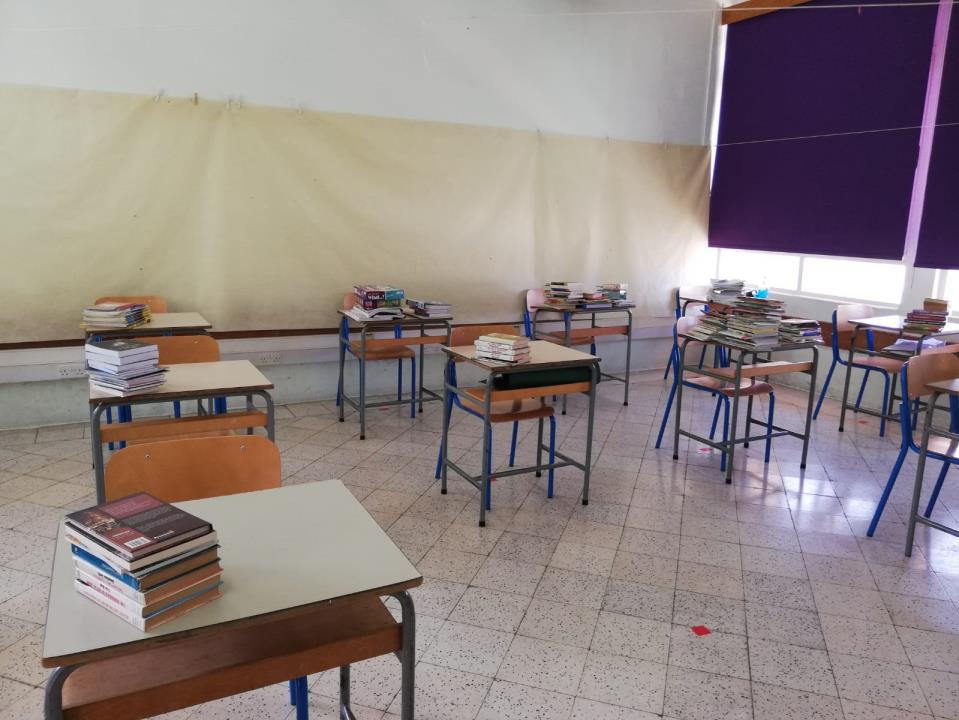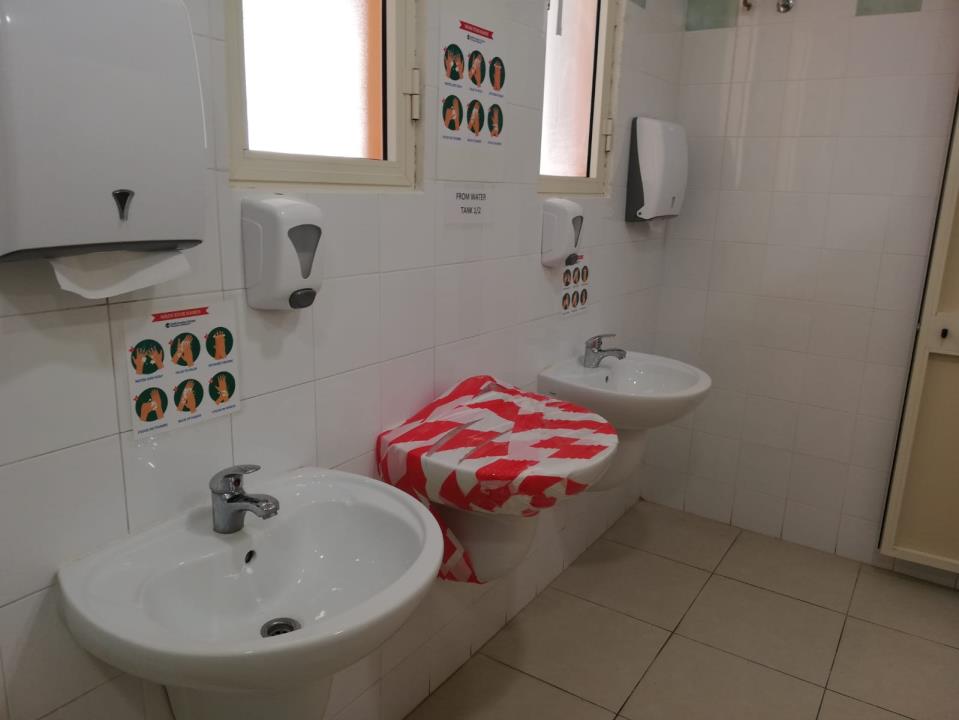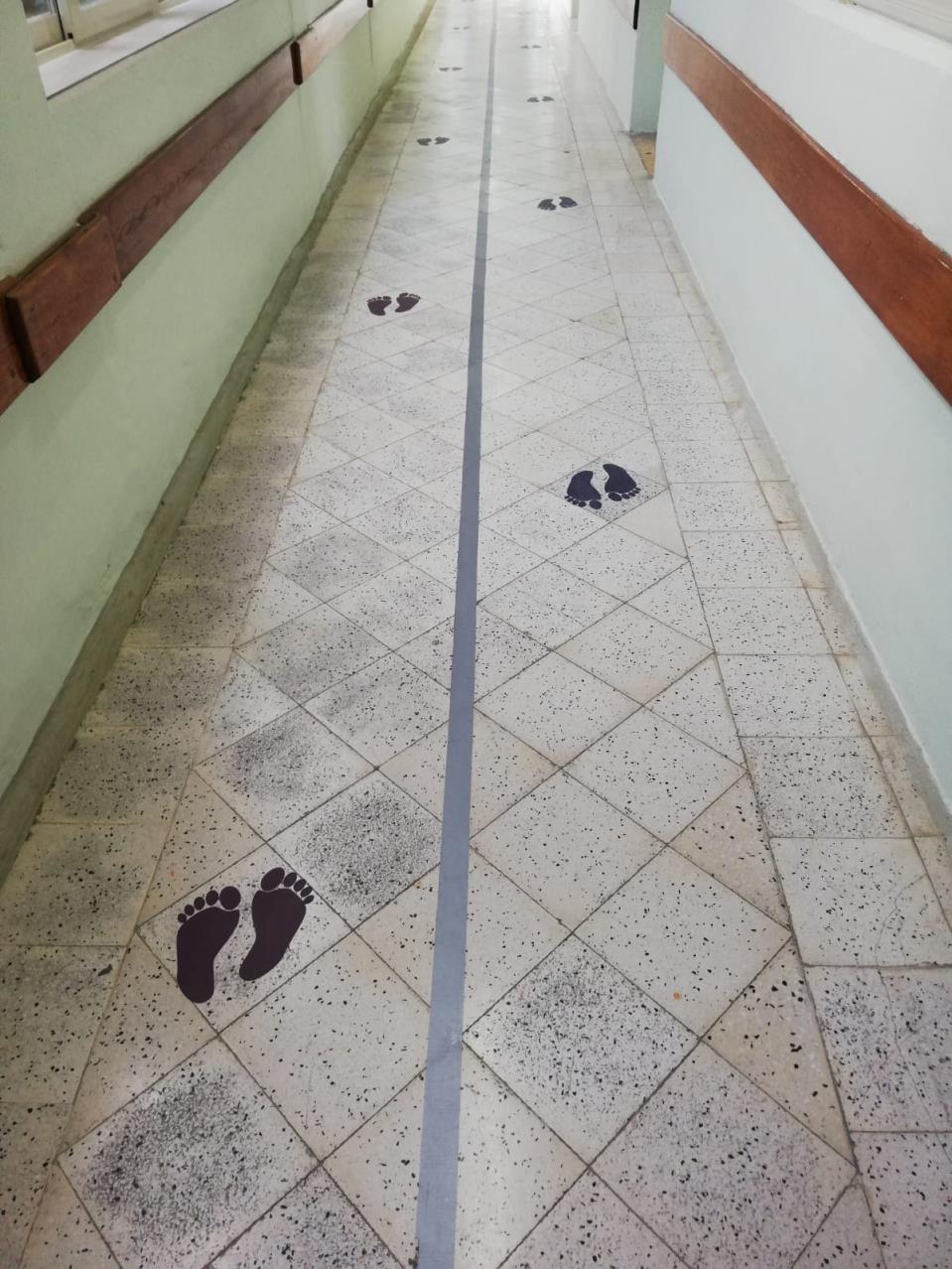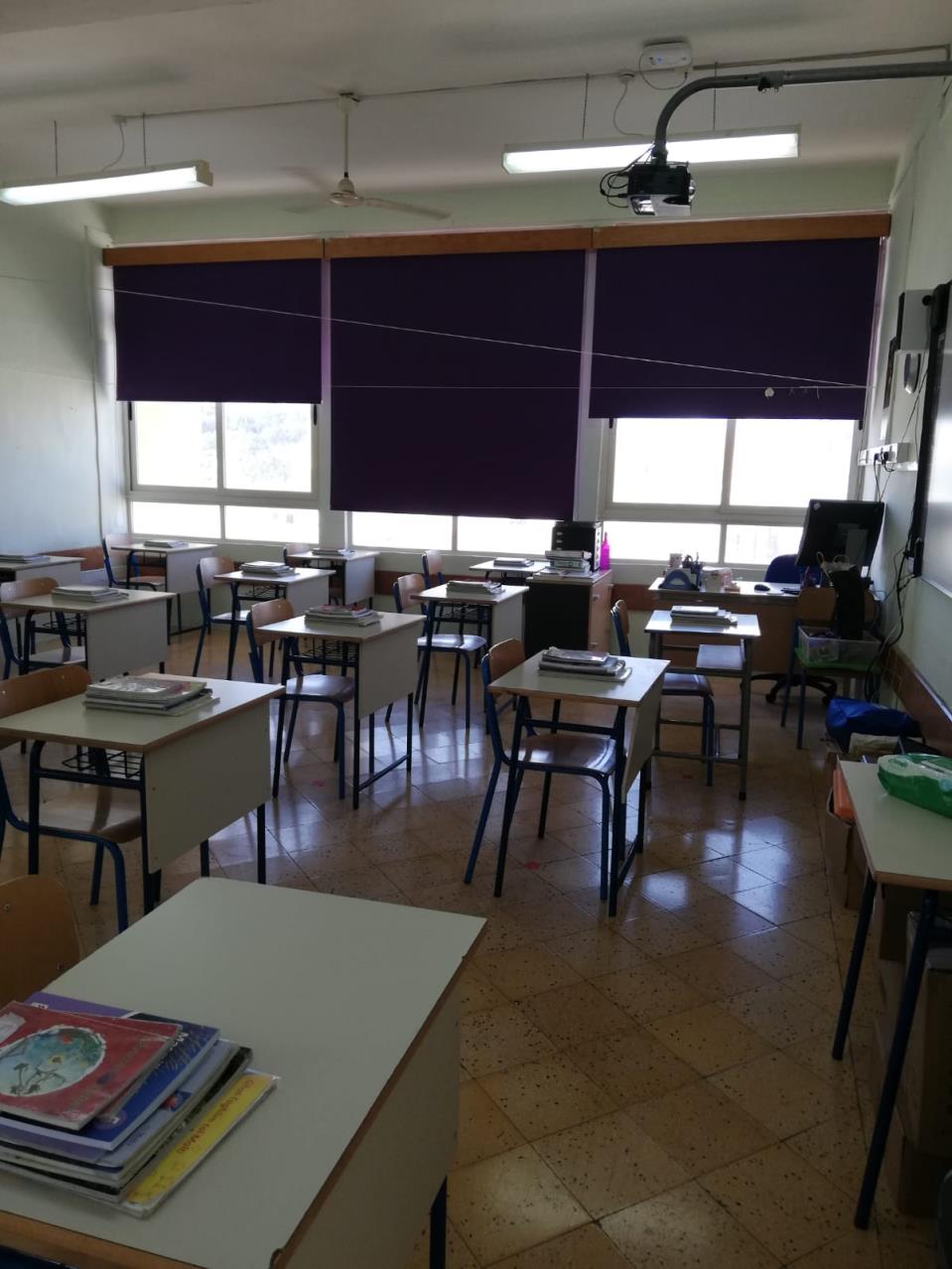An isolation room for students who have a high temperature or other possible symptoms of COVID-19 is one of several measures which St Margaret College Primary School has taken up to prevent and reduce the risk of the virus spreading.
On Saturday, this newsroom was invited by the Education Ministry to join Minister Owen Bonnici for a school tour of the government kindergarten and primary school in Kalkara. The school has a population of around 150 students. Whilst being on the smaller side compared to other schools, it still has taken all the necessary precautions to ensure the safety of all staff and students. Bonnici has spent the week going around different government schools to show the procedures and measures the schools have taken and to show educators, students and parents that everything is in order.
After the government had announced numerous times that students will go back to school on 28 September, on Friday, it announced a delay in the reopening of schools. Students will return to school in a staggered order, over seven days, so as to allow a smooth transition. Therefore, students attending compulsory education in State Schools will start returning from 7 October. All students will be back in the classroom by 14 October. After its announcement, Church schools also followed the same direction.
‘There were huge disagreements between the Ministry and the Union’
Earlier this week MUT announced that the discussions on the implementation of COVID-19 measures in schools had failed, shortly after, the government decided to postpone the reopening of schools. When this newsroom asked whether there are still disagreements between the union and the Ministry, Bonnici said that there have been numerous discussions in the past few days between the two entities. “There were huge disagreements between the Ministry and the Union, but always a level of respect between us. Over the last few days, we had further discussions and we are now in a position where teachers and educators will go back to the classrooms on Monday, with students following at a later date.”
Three entrances for different classrooms
The school, which caters for kindergarten and primary students, has three entrances to separate the arrival of students and reduce clustering in one area. Upon arrival at the school, there are clear signs for students to abide by social distancing measures and to wait patiently for their temperatures to be taken at the entrance and to sanitise their hands. Next to each entrance, there are boards with information for children and staff on how to wear their mask and sanitise their hands properly, and on the importance of maintaining social distancing. Parents or guardians will not be allowed in the building.
The school will keep the windows open throughout the day to ensure that the air is circulated. The school has six classes for primary and four classes for kindergarten. The school will no longer start the day with an assembly. Instead, students will go directly to their classrooms upon arriving in the morning.
For those children who take part in the Breakfast Club, students will no longer eat breakfast together but will do so in their classrooms to keep each student in their bubble.
Just before the hall leading to the classrooms there is a room called the “isolation room”. The headmistress explained that the isolation room is for students who might have a high temperature or might develop symptoms of the virus throughout the day. The student or students will be placed in the room until a parent or guardian comes to collect them. In the room itself the desks are scattered and there is even a Perspex sheet separating the desks. There will also be a supervisor with the child to ensure that child is not left alone.
The classrooms which will host primary students have the necessary 1.5 metre spacing between desks, and the school has even placed red stickers on the tiles so that staff and students know the appropriate spacing between each desk. The headmistress also explained that this gives the cleaners who will be cleaning the classrooms everyday an indication as to where the tables need to be placed.
Due to the fact that the school hosts a small number of children, some classrooms have more space between their desks.

Perspex sheet between LSE and student
In the case of a student who needs support from a LSE, the school is providing a Perspex sheet between the student and the LSE, to ensure that they can work together but still be protected. Bonnici explained that this is an initiative which the school has provided and that each school will provide something different. According to the student and their needs, some students will need more support and help and cannot have a Perspex sheet between them and the LSE.

Books to be quarantined for 72 hours before another child can borrow them
Prior to the virus, schools had libraries or designated areas for children to borrow books, but now students will not be allowed to share books so freely. In this scenario, the school has provided each student with reading books to start the year with, and then after the books are quarantined for 72 hours, another child can make use of that book.
Children will also have to maintain social distancing once in the bathroom. There will be supervisors at the door of the bathrooms to ensure that there are no large groups in that area, and from the beginning of the scholastic year, students will be taught about keeping a distance and hygiene. In the bathrooms, there are sinks which are wrapped and banned from being used to ensure that students maintain a distance. The bathrooms will be cleaned three times a day.

Kindergarten students
The protocols for kindergarten are slightly different to those of primary and secondary schools. Whilst social distancing between students at that age might be more difficult, groups will be limited to 15 in Kinder 1 and 19 in Kinder 2, Bonnici explained.
In the classrooms, the desks are well spaced out and whilst two students will be sharing a desk there is a coloured tape dividing the desk. This is done for students to keep their items on their side on the desk.
During break time, different classes will go out at different times to ensure that students keep to their own class bubble and for fewer students to mingle together. Each class will also have their own area on the playground.